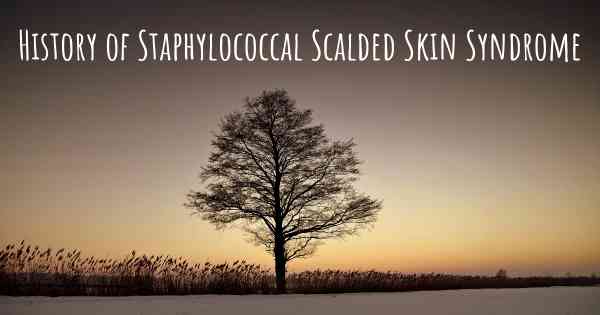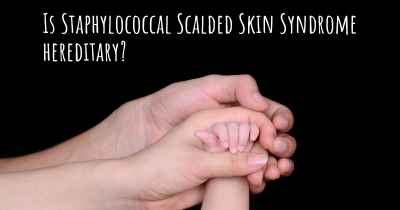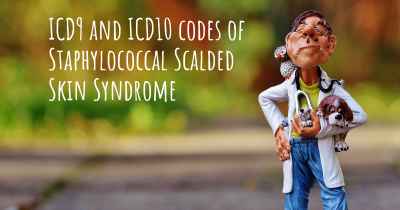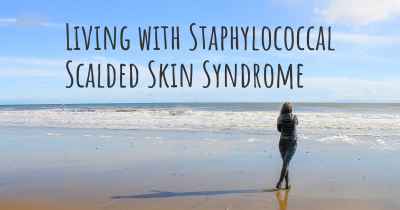What is the history of Staphylococcal Scalded Skin Syndrome?
When was Staphylococcal Scalded Skin Syndrome discovered? What is the story of this discovery? Was it coincidence or not?

Staphylococcal Scalded Skin Syndrome (SSSS) is a rare and potentially serious skin condition caused by an infection with certain strains of the bacteria Staphylococcus aureus. It is characterized by widespread blistering and peeling of the skin, resembling a severe burn or scald. SSSS primarily affects infants and young children, but it can also occur in adults with weakened immune systems.
The history of Staphylococcal Scalded Skin Syndrome dates back to the late 19th century when it was first described by a French dermatologist named Ritter. In 1880, Ritter observed a group of newborns who presented with extensive skin peeling and blistering. He initially named the condition "pemphigus neonatorum" due to its similarity to another blistering disorder called pemphigus. However, further research and understanding of the disease led to the recognition that it was caused by a staphylococcal infection, leading to the adoption of the term "Staphylococcal Scalded Skin Syndrome."
The causative agent of SSSS, Staphylococcus aureus, was first identified by Sir Alexander Ogston in 1880. He isolated the bacteria from a surgical abscess and named it Staphylococcus due to its characteristic appearance under the microscope, resembling a cluster of grapes. Since then, Staphylococcus aureus has been recognized as a common pathogen responsible for various infections, including skin and soft tissue infections.
The pathogenesis of SSSS was not fully understood until the mid-20th century. In 1956, Lyell and colleagues proposed the concept of an exfoliative toxin produced by Staphylococcus aureus as the primary cause of the skin peeling in SSSS. They demonstrated that the toxin could be isolated from blister fluid and reproduced the disease in experimental animals by injecting the toxin. This breakthrough discovery paved the way for further research into the mechanisms of SSSS.
Over the years, advancements in microbiology and molecular biology have allowed for a better understanding of the specific exfoliative toxins involved in SSSS. Two major exfoliative toxins, ETA and ETB, have been identified as the primary culprits. These toxins target a protein called desmoglein-1, which is responsible for maintaining the integrity of the skin's outermost layer. By cleaving desmoglein-1, the toxins disrupt the adhesion between skin cells, leading to the characteristic blistering and peeling seen in SSSS.
The incidence of SSSS has been relatively low, but outbreaks have been reported in various settings, including hospitals and neonatal intensive care units. Factors that contribute to the spread of SSSS include overcrowding, poor hygiene practices, and close contact with infected individuals. The disease is more common in infants and young children due to their immature immune systems and higher susceptibility to staphylococcal infections.
Diagnosis of SSSS is primarily based on clinical presentation and confirmed by laboratory tests. The characteristic features of widespread blistering, skin peeling, and a positive Nikolsky sign (skin detachment with gentle pressure) are indicative of SSSS. Additionally, bacterial cultures from skin lesions or other potential sources of infection can be obtained to identify the presence of Staphylococcus aureus.
Treatment of SSSS involves prompt administration of appropriate antibiotics to target the underlying staphylococcal infection. Intravenous antibiotics, such as penicillinase-resistant penicillins or cephalosporins, are commonly used. Supportive care, including fluid replacement and wound care, is also essential to manage the extensive skin damage. In severe cases, hospitalization in a specialized burn unit may be necessary.
Prevention of SSSS relies on strict adherence to infection control measures, particularly in healthcare settings. Proper hand hygiene, regular disinfection of surfaces, and appropriate isolation precautions for infected individuals can help prevent the spread of Staphylococcus aureus and reduce the risk of SSSS outbreaks.
In conclusion, Staphylococcal Scalded Skin Syndrome has a long history that dates back to the late 19th century. The identification of Staphylococcus aureus as the causative agent and the discovery of exfoliative toxins have significantly contributed to our understanding of the disease. Advances in diagnosis and treatment have improved outcomes for individuals affected by SSSS. However, continued efforts in infection control and research are necessary to further prevent and manage this potentially severe condition.








